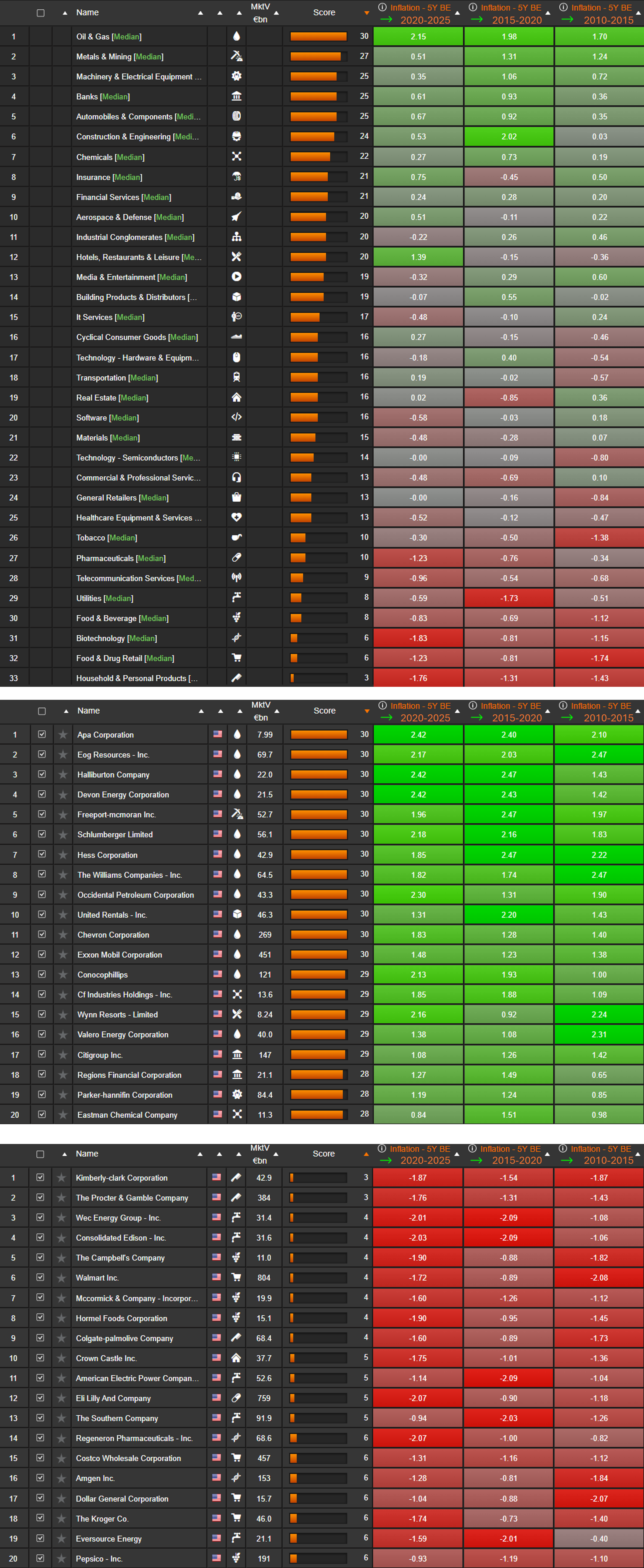
US inflation unexpectedly rose to 3% in January, challenging the perception that inflation was under control after a prolonged period of high interest rates. Recent data from both the US and Europe suggest inflationary pressures remain persistent, pushing rate expectations higher.
While the stock market generally reacts negatively to sustained high rates, not all stocks are equally affected. Some sectors and companies have historically performed better in inflationary environments.
Inflation Sensitivity Across S&P 500 Stocks
The visual shows how S&P 500 stocks have historically responded to inflation. It includes:
Based on 15 years of data, the sectors that tend to benefit from inflation include:
- Oil & Gas
- Metals & Mining
- Machinery & Electrical Equipment
On the other hand, sectors that struggle the most include:
- Household & Personal Products
- Food & Drug Retail
- Food & Beverage
- Utilities
At the stock level, Halliburton and EOG Resources have historically gained in inflationary periods, while Kimberly-Clark and Procter & Gamble have been among the hardest hit.
Methodology
We calculate an inflation impact factor using:
· 5-year weekly correlation to the 5-year Breakeven US T-Bond
· Beta to the 5-year Breakeven US T-Bond in a 2-factor regression (5Y Breakeven + S&P 500)
The factor is computed over three periods (2020–2025, 2015–2020, 2010–2015). Stock scores represent the sum of their decile positions across these periods, and sector impact is based on the median score of constituent stocks.
